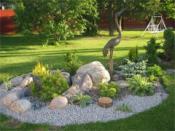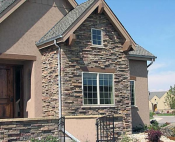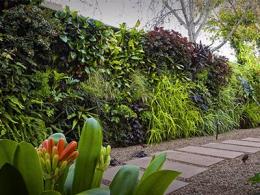Search
Login
Recommended
The best hedge, hedge - make a live fence with your own hands
The hedge is a natural protection against street noise, wind, dust and strangers. Moreover, it is definitely better to live and relax in an open environment, rather than in a confined space surrounded by a stone or wooden fence. Such an aesthetic solution will protect your yard from neighbors or simply divide the garden into small sections. However, before starting a project, as in any business, knowledge is needed, we will share with you the necessary information on how to grow a hedge with your own hands.
Content:
Place for plants
Where exactly do you want to land hedge? If there is a shadow on the hedge, choose plants such as yew, barberry, boxwood, cornel. Please note that some plants may appear in the sun, and some in the shade, this can happen at different times of the day - day and evening.
Soil pH should be studied. Coniferous plants will feel good on slightly acidic soil; barberry, brilliant cotoneaster, ligustrum, and hawthorn will prefer medium soil (pH 4-5).
Also, consider the possible width of your hedge. With the correct pruning of shrubs, a hedge can turn out to be very narrow - 30 cm. For a wide hedge, planting of plants in two to three rows may be required.
Hedgerow Plants
Now you have to decide what height your fence will be, which depends on the type of plants. For a low hedge (up to 1 m high), spirea, boxwood or barberry is suitable; for medium (1-2 m.) action, vesicle, hawthorn. Coniferous plants such as spruce, pine, thuja are ideal for high hedges. Shrubs for hedges 1.5-2 m high are hazel, privet, lilac and jasmine.
Evergreen hedges may include deciduous plants: euonymus, boxwood, barberry. The most common conifers are juniper, thuja, yew and spruce. Remember, evergreen conifers are less resistant to polluted air than plants with falling leaves. But, if you chose the evergreen defenders, you should choose the most dust-resistant, such as thuja, Austrian pine or European larch (dropping needles in winter).
A fast-growing hedge consists of only a series of deciduous shrubs and trees dropping foliage. The best deciduous defenders from intruders are sea buckthorn, wild rose, turn, gledichia, hawthorn, barberry. The hedge perfectly combines various plants or one type of shrub, but of a different variety.
Planting plants
The first thing to do is pave the way. In and around the hedge site, remove weeds, especially perennials. To combat perennial weeds (wheat grass, bindweed, thistle, milk thistle, etc.), chemical agents that destroy the roots are used, but the interval between planting hedges and tillage should be at least two months.
After the destruction of weeds, the earth is dug up, the sandy soil is enriched with compost or clay. Shrubs for hedges are best planted in spring or autumn, for this purpose, ready-made seedlings are purchased (or you grow them yourself in containers), each plant is planted in a separate hole.
For a smooth landing, we draw a line, even better, we tear out an even groove along which a fence will be created. Planting density depends on the type and size of plants. A classic hedge consists of one row, a wider one - two. Within a few weeks after planting, do not forget to regularly water the plants. Invites you to see how the hedge grows in a photo, which will surprise you with variety.
Care
Hedgerow requires regular maintenance: weeding, watering, fertilizing and pruning. Fertilizers are applied to the soil not only after planting, but also throughout the year, minerals help plants to take root better, accelerate growth. Feeding is carried out 2-3 times a year from May to July along with a sufficient amount of water.
Speaking of watering, do not forget to moisten the soil during drought, when there is no rain for a long time. Water is supplied evenly, not by a strong stream around each plant. The most important stage in care is the proper pruning of plants.
Hedge pruning
Mowing a hedge is the basis in shaping a beautiful shape. Sticking branches and leaves should not be allowed in any form of fence - round or even like a wall.
Prepare the tools before trimming, they must be clean and sharp. Wait for cloudy weather to protect the tender shoots from sunburn. The first cut should be low, 10-20 cm above the ground.
Coniferous hedges are usually cut two to three times a year. For the first time, all the stems are cut by 1/3 of the length at the beginning of spring, pines and spruce are pruned at the end of winter (before they begin to secrete resin). In the same year, the second pruning will follow in July, by 10 cm. The needles are also trimmed in the autumn, no later than September. When conifers reach the required length, pruning stops at 5 cm.
Thuja Brabant, Juniper Spartan and Tsuga Canadian are well tolerated for pruning. In addition to hardy qualities, they are known as fast-growing - up to 40 cm per year.
Deciduous hedges form soon after planting. They are cut to 20 cm. Regardless of the original length, so the plants will acquire the desired density. The second pruning will be 30 cm next year. In subsequent years, shoots should be reduced by 10-15 cm more than the previous cut. Thus, the plant will not be too tall and thicker. When the hedge reaches the desired height, it is cut by 2-3 cm.





